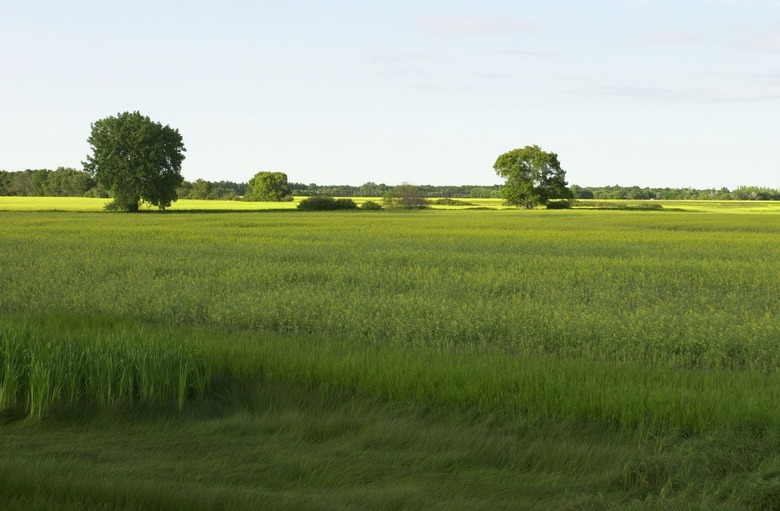Landforms And Natural Resources Of The Coastal Plain
The low-lying flat land of coastal plains extends from large bodies of water and gently rises, continuing inland to higher terrain. These plains exist all around the world where sloping land meets the sea or ocean. One well known coastal plain is the Atlantic Coastal Plain. It stretches along the entire eastern coast of North America, from Nova Scotia to Florida, and extends westward into Texas along the Gulf Coast.
Coastal Landforms
Coastal Landforms
The Atlantic Coastal Plain features numerous protected ocean bays where diverse populations of wildlife thrive and boaters can find shelter from storms. Estuaries provide another unique habitat for wildlife. In a coastal estuary, river water flows into and mixes with salty ocean or sea water. This mixing causes a brackish environment that is not as saline as sea water but cannot be considered freshwater either. Many animal and plant species have adapted to live in these brackish water conditions and can live in no other environment on earth. On shore, beaches and coastal dunes provide specialized habitats for turtles and birds.
Karst Landforms
Karst Landforms
Karst occurs in landscapes where the underlying rock is composed of calcium-rich limestone. The limestone erodes and dissolves as water passes through the ground, causing caves and caverns to form. Southern areas of the Atlantic Coastal Plain, including parts of Florida, Alabama and Georgia, sit on top of limestone beds. In these areas, disappearing rivers form where an above-ground river suddenly drops below ground and flows through caverns in the limestone. Sink holes form when the ground above the karst becomes unstable and can cause cave-ins. Sometimes sink holes fill with water and turn into lakes.
Wetlands
Wetlands
Coastal plain wetlands include swamps, marshes, floodplains and peat-lands. On the Atlantic Coastal Plain, these areas provide habitat for a wide range of wildlife, including deer, bobcats, panthers, gray foxes, black bears, songbirds, waterfowl, alligators, snakes, frogs and turtles. Wetlands are ecologically-diverse communities. In addition, wetlands absorb flood waters and allow moisture to pass from the surface into the groundwater. Meandering rivers cross the coastal plains in snaky looping paths, changing course rapidly over just a few years. These changes leave behind meander scars and oxbow lakes.
Economic Resources
Economic Resources
The Atlantic Coastal Plain is rich in natural resources of economic value. Floods deposit deep rich soils that nourish wild and farm plants. Hardwood and coniferous forests grow to provide habitat for wildlife and sources of lumber for commercial uses. Cleared land is used for agriculture. Mining operations extract bauxite, sulfate, salt, bentonite clay, kaolin clay, crushed limestone for cement and peat for potting soil mixtures. Oil and gas deposits exist in the salt-domes of Alabama, Mississippi and Louisiana.
References
Cite This Article
MLA
Mathis, Christine. "Landforms And Natural Resources Of The Coastal Plain" sciencing.com, https://www.sciencing.com/landforms-natural-resources-coastal-plain-8747174/. 24 April 2017.
APA
Mathis, Christine. (2017, April 24). Landforms And Natural Resources Of The Coastal Plain. sciencing.com. Retrieved from https://www.sciencing.com/landforms-natural-resources-coastal-plain-8747174/
Chicago
Mathis, Christine. Landforms And Natural Resources Of The Coastal Plain last modified August 30, 2022. https://www.sciencing.com/landforms-natural-resources-coastal-plain-8747174/




